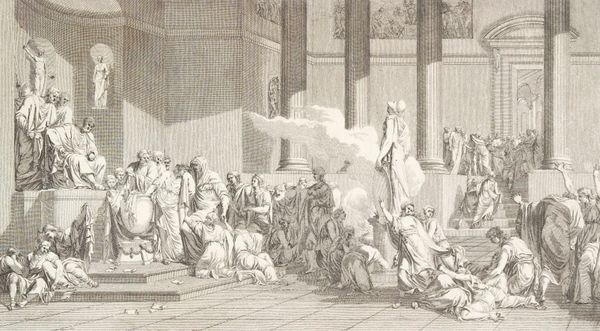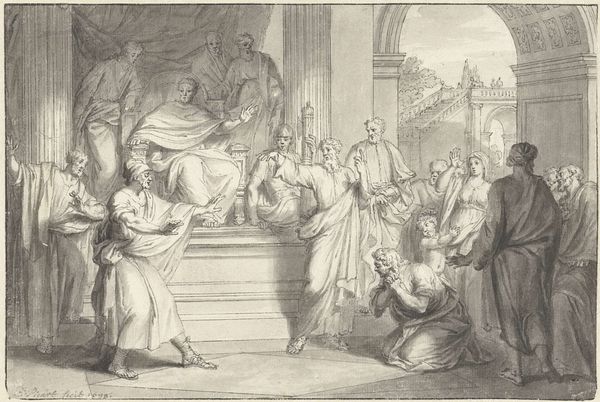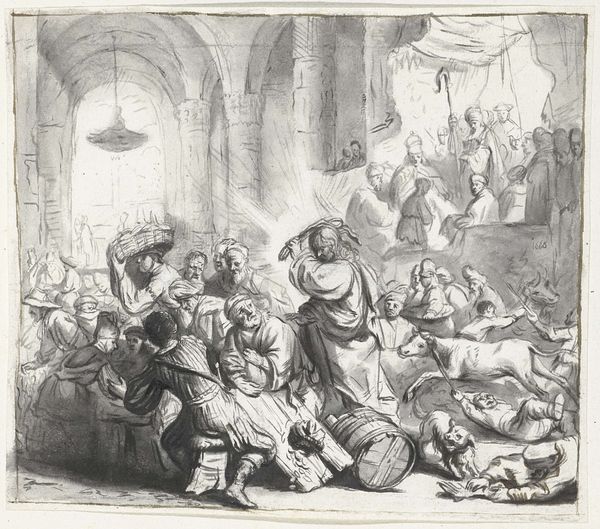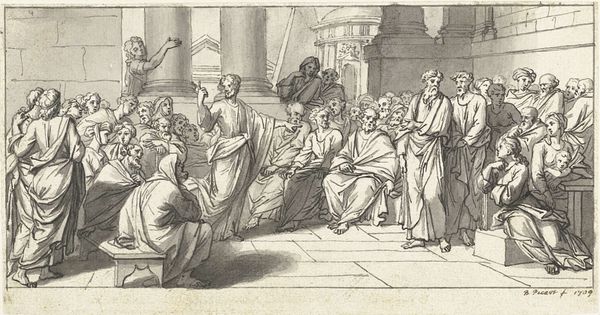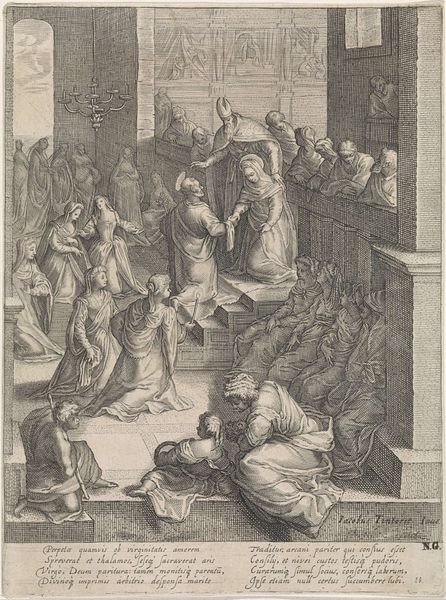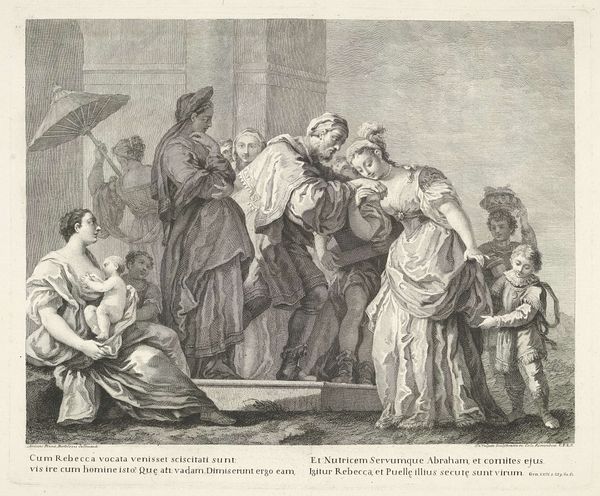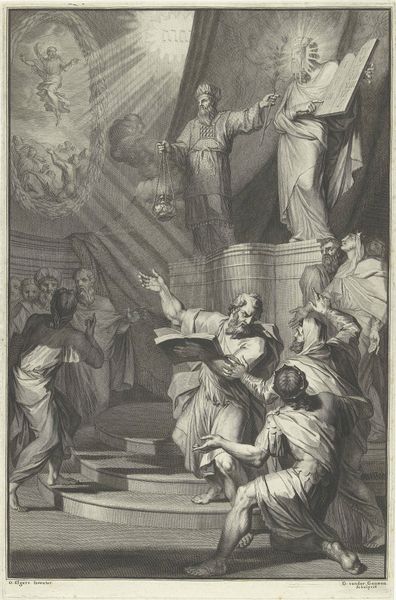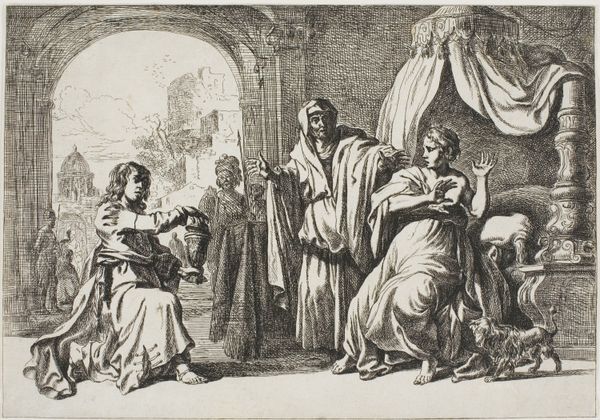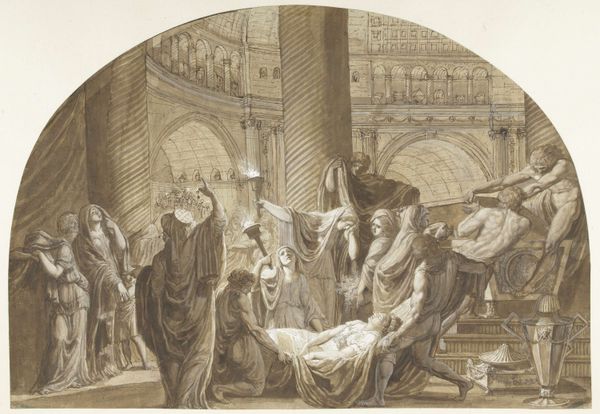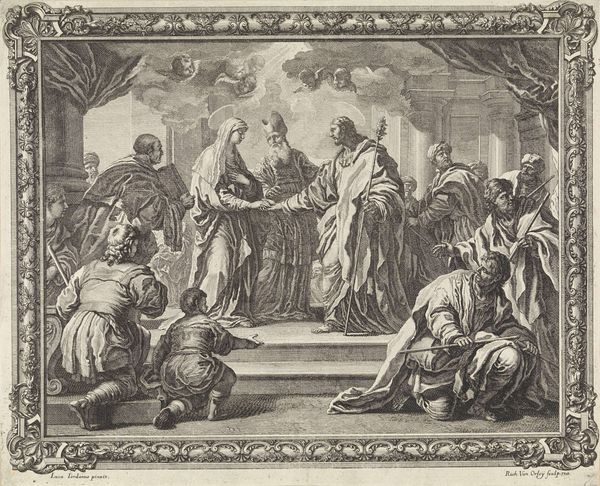
print, engraving
#
neoclacissism
# print
#
figuration
#
history-painting
#
engraving
Dimensions: 387 mm (height) x 492 mm (width) (bladmaal), 546 mm (height) x 466 mm (width) (plademaal), 244 mm (height) x 440 mm (width) (billedmaal)
Editor: So, this is J.F. Clemens’ "Lodtrækning af den atheniensiske ungdom," from 1827. It's an engraving. The scene feels so formal, but the emotions of the figures seem really raw. What catches your eye when you look at this piece? Curator: As a materialist, I'm drawn to how the engraving process itself shapes our understanding of this scene. Think about the labor involved, the repetitive act of incising lines into a metal plate. Each line contributes to the overall image, and together these laboriously engraved lines create a depiction of an Athenian ritual—drawing lots, presumably for some form of sacrifice. It prompts questions about the social context of both the depicted event and the making of the print itself. Editor: Sacrifice, that makes sense given the dramatic emotions! The figures are so expressive for what I understood of Neoclassical art. Curator: Precisely. Neoclassicism, often associated with order and reason, is here mediated through the very material process of printmaking. Look at how the lines create not only form but also a sense of drama and movement. This brings up fascinating issues around labor, materiality, and consumption. Who was this print made for? What kind of audience consumed images of classical sacrifice, and what social function did this type of artwork serve? Editor: So you’re thinking about how the means of production influences the message of the artwork? How Clemens’ status or background may have shaped the scene he engraved? Curator: Exactly. We need to examine who had access to this image, how it was distributed, and what meaning it held for its original audience, how it served some interests or others in that social moment. Editor: I hadn’t thought about the engraving as an active part of interpreting the scene, beyond just being the medium! Now, it seems like a commentary in itself. Curator: Right! By emphasizing materiality and social context, we go beyond traditional notions of high art to look at the work involved, the lives it touches, and the ideas about power it expresses.
Comments
No comments
Be the first to comment and join the conversation on the ultimate creative platform.
